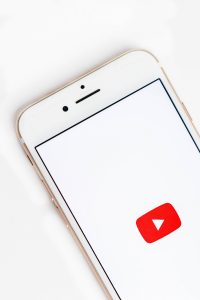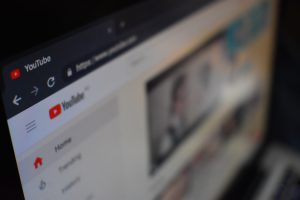A New Way to Reach External Publics
Published on March 6, 2020, at 8:33 p.m.
by Katie Poedtke.
YouTube dominates as a video-sharing outlet for many different industries, such as movies, music, art, science and math. There is no doubt that the platform is versatile. It is accessible and relatively easy to navigate, leaving it open to the public to make accounts and, in turn, create content.
Celebrities and influencers, such as Morgan Yates, launched careers and social media campaigns off the sturdy foundation of YouTube videos and content. Brands notice these trends becoming more popular, and several companies are taking advantage of these opportunities by capitalizing off of brand partnerships.
Brand partnerships, also known as co-branding, are considered, “two (or more) parties consciously deciding to collaborate on a specialized product,” according to Investopedia. In other words, two entities come together to form an interdependent relationship in order to succeed in their respective markets.
Back to the basics
Brand partnerships commonly infiltrate YouTube videos, and sometimes people are not even aware of the practice. The best kinds of partnerships are authentic, bona fide relationships between influencers and the brands they work with. The partnerships become mutually beneficial, increasing revenue and exposure for the brand and influencer simultaneously.

Brand partnerships have been successful in other industries, including fashion, food and even airlines. Bringing YouTube into the mix is what transforms the public relations and marketing strategy from a traditional choice to a new facet of what has been done before.
Brand partnerships on YouTube could be short or long campaigns that can span over a period of time. Shorter campaigns are easier to manage and could only last one day. Longer campaigns could span over several months or years.
A great example of a long-term brand partnership is David Dobrik and SeatGeek. David Dobrik, originally a Vine star, became successful on YouTube almost instantly because of his “vlogging,” or video blogging. In his catchy videos that include all kinds of material, Dobrik references SeatGeek and all the benefits the company provides.
What’s the key to SeatGeek’s success with Dobrik? The authenticity.
Dobrik integrates promotions of SeatGeek into his videos in such a way that his personality still shines through and keeps his viewers engaged. According to Sideqik, “SeatGeek has seen a 1,500% increase in its sales since 2015 thanks to promotion done through Dobrik and other influencers.”
A sales increase of 1,500% is not something that can be overlooked. Clearly, brand promotions and partnerships are great paths to venture down, especially with the new technology available, such as YouTube.
Good business for brands and influencers alike
According to Barrett Wissman in a Forbes article, “Influencer marketing is predicted to swell to a $10 billion industry within the next five years.” Wissman explained that creating a brand partnership with influencers can foster “exclusivity” and alternative ventures not previously discovered.
Soft key performance indicators are not strangers to the public relations world. Madi Westbrooke, a vlogger with 179,000 subscribers on YouTube and over 36,000 followers on Instagram, described the mutually beneficial relationship for the brand and the influencer. She links to brands she partners with in her videos, and the links gain traction. She also expressed that her audience has reached out with questions about the products she uses. In a Nasty Gal partnership, Westbrooke explained that she provided links to the brand’s website. In this way, she received a commission for the product and “brought exposure to the brand.”
Brands of all sizes can gain success from these partnerships. Whether or not the brand is locally- or nationally-known does not deter the amount of influence promotions may have. Abby Asselin, a vlogger with 84,700 subscribers on YouTube and over 20,000 followers on Instagram, illustrates this example in her own work. She promotes what her friends do at a local level, and she notices how many of her subscribers “ask for shipping details” and show interest in her friends’ products. On the other hand, Asselin provides affiliate links that help “drive traffic through to websites” of the product she promotes in her videos.
Impactful and original partnerships are often the unconventional ones. It is always smart to partner with influencers and brands that make sense and fit with the brand’s identity. Creator Academy elaborated, “Some of the best partnerships stem from creative meetings between a brand and creator.” Different angles in public relations and marketing through different influencers and brands would definitely distinguish a brand. If done well, this holistic approach could bring great success for the campaign.
Where to begin
Build a relationship founded on trust with an influencer on YouTube. Trust will bring effortless authenticity into the campaign. In order for subscribers to believe in the product, the influencer must believe in it as well. Westbrooke noted, “People can tell when you’re lying. It sounds scripted.” Some of the most effective partnerships are the ones that make sense to the audience. The natural transition to promoting a brand or its product in a relevant context can usher in positive responses.

Asselin explained that “establishing a system of guidelines is easiest to work with.” Creating a content calendar for the influencer may help with content creation in regard to YouTube videos.
YouTube gives influencers wide reach to their subscribers and audiences beyond their direct followers. YouTube can give an influencer more freedom and range to speak about the product in use, according to Asselin. An integrated campaign style is worth considering, as well. Westbrooke believes, “It is smart to use both YouTube and other social media outlets.”
When looking to start a campaign with influencers, Westbrooke and Asselin both suggested looking at the content the influencer creates and the audiences he or she attracts. It is also possible that influencers work with agencies, so working with managers is key.
Micro-influencers should not be overlooked either, said Asselin. Some brands find success in partnering with large and small influencers at the same time. This trend spreads awareness on all kinds of levels, and it has the possibility to reach more audiences as well.
Future of brand partnerships and YouTube
Brand partnerships on YouTube are taking over the media industry, and it does not seem like the trend will be disappearing any time soon. If brands want to connect with the younger generations, this is a great way to start. As YouTube and vlogging become more strategic in the public relations profession, it is worth considering whether or not a brand lends itself to this new and modern way of reaching external publics.




